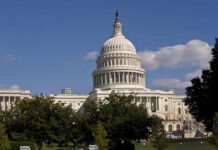
While more than 95% of Americans are concerned about the state of the economy, consumer spending has remained resilient, leading to the popularity of a new economic term known as “doom spending.”
Americans are 'doom spending' — here's why that's a problem https://t.co/4oM9lHpB3T
— CNBC (@CNBC) November 29, 2023
The credit monitoring website Credit Karma has defined the new term as “spending money despite concerns about the economy and foreign affairs to cope with stress.”
The negative economic numbers are staggering: “In the last six months, half of Americans say their financial situation has worsened, with 42% reportedly struggling to afford enough food for themselves and/or their household and another 56% living paycheck to paycheck.”
Even with the economy worsening for most people, according to Credit Karma, more than 27% of Americans are spending more now than they were six months ago.
“We’re seeing people mindlessly shop to soothe concerns about the economy and foreign affairs, which could take a toll on their financial well-being,” said Courtney Alev, Credit Karma’s consumer financial advocate.
This past weekend gives a snapshot of the “doom spending” taking place across America. A record 200 million shoppers turned to retail therapy from Black Friday to Cyber Monday. On top of that, holiday spending in 2024 is expected to break spending records with totals up to $966.6 billion.
Doom spending is just another symptom of a faltering American economy, and it can lead to other economic issues as well. For instance, credit card debt in America has topped $1 trillion and more than half of Americans have less than $2,000 in savings.
These issues are affecting Gen Z and millennials more than older generations.
According to a study done by Intuit, 73% of Gen Zers would rather live in the moment than cut spending, 75% would rather have a better quality of life than extra money in the bank, and 66% of Gen Zers are only interested in finances as a way to support their other interests in life.
A recent Forbes article takes the idea of doom spending to a new level in what the article calls a “doom loop.”
“American families face a confluence of financial challenges, including high inflation, escalating costs and mortgage rates that make it nearly impossible for young families to purchase a home. To make matters worse, an abrupt job loss could lead to a financial doom spiral.”
The article takes doom spending to a more difficult conclusion where “one negative economic condition catalyzes another negative condition, creating a third negative condition or reinforcing the first, resulting in a downward spiral.”
All of the “doom” talk stems from an economy suffering from skyrocketing costs due to inflation, high interest rates, cost of living increases and unaffordable housing.




























